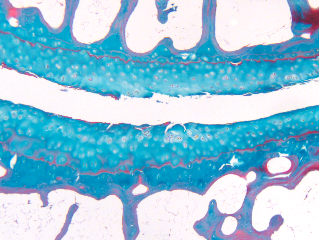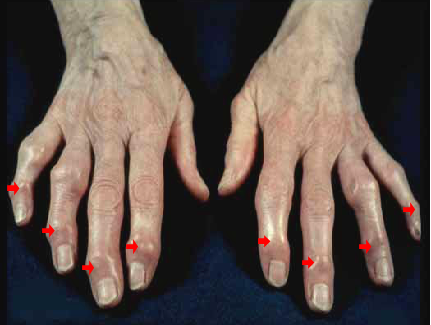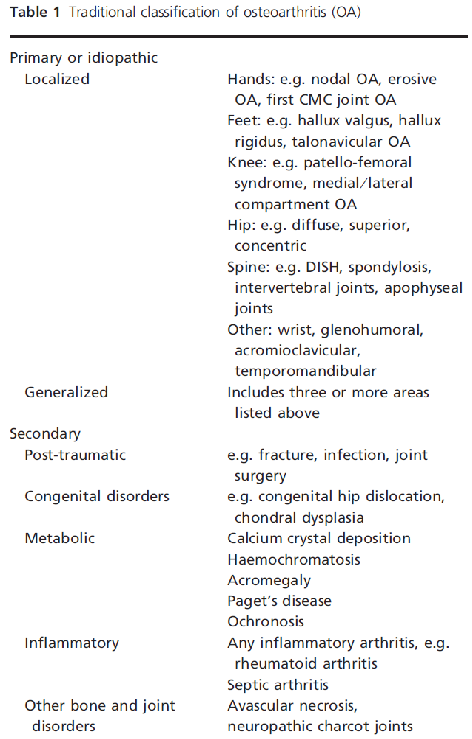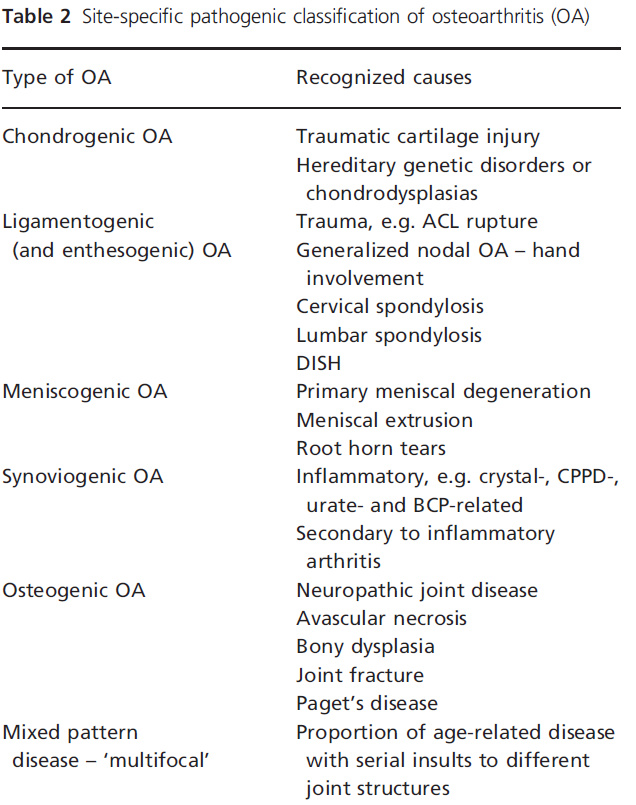Enthesopathy and Osteoarthritis Classification
What is Osteoarthritis?
Osteoarthritis represents a diverse group of conditions that may eventually leads to joint failure of "wear and tear".
It is by far the most common form of arthritis and is associated with ageing.
Historically Osteoarthritis was thought be represent a disease that either started in the cartilage (shock absorbing tissues on the end of bones) or linked to abnormalities in the bone directly underneath the cartilage.
 |
| This is the cartilage and adjacent bone in a normal human joint. It was thought that Osteoarthritis was mostly a disease of "wear and tear" of these tissues |
The place of enthesopathy in early Osteoarthritis
Our research in Leeds showed that early Osteoarthritis may manifest initially in the enthesis and adjoining ligaments and tendons.
This was first demonstrated in hand Osteoarthritis
 |
 |
| This shows the appearance of hand Osteoarthritis. The red arrows show a tissue called a Heberdens node. The magnetic resonance imaging scan on the right shows damage to the ligaments and enthesis as the most striking finding. | |
Following this work in hand Osteoarthritis the importance of enthesopathy was then shown in knee Osteoarthritis.
The recognition of the importance of enthesopathy in Osteoarthritis resulted in a new classification scheme for disease.
 |
| Table 1 shows the traditional classification for Osteoarthritis as primary (cause unknown) or secondary (cause known). |
 |
| Table 2 shows that disease relating to the enthesis is a hitherto poorly appreciated cause of early Osteoarthritis. Enthesopathy or enthesiogenic Osteoarthritis as a key factor in disease was recognised. This new theory of Osteoarthritis was developed in Leeds and Galway. |
The role of the enthesis as a site of Osteoarthritis initiation has also been proven in some experimental types of Osteoarthritis.
An example of Enthesopathy as the cause of pain in early knee Osteoarthritis
Patients typically present to doctors with knee pain or intermittent swelling.
The examination may be normal.
An X-ray may be normal.
Surgeons may put a camera into the joint (arthroscopy) but see no abnormalities.
The normal appearance of cartilage could result in the patient not obtaining a diagnosis.
The image below is from a patient sent to see us with knee pain and normal investigations.
 |
| This is a knee magnetic resonance imaging in a patient with early Osteoarthritis showing bone marrow abnormalities at the insertion of the anterior cruciate ligament (asterisk) and at the medial collateral ligament insertion (white arrowhead). This is a type of early enthesopathy related arthritis. |
Summary of emerging role of the enthesis in early Osteoarthritis
In general enthesopathy is poorly recognised as a cause of pain in Osteoarthritis.
The enthesis is a new area of research in Osteoarthritis.
Given the importance of the enthesis in pain development, there is great scope to understand the disease from this perspective.
Pain may occur outside joints in Osteoarthritis and this is often related to enthesopathy.